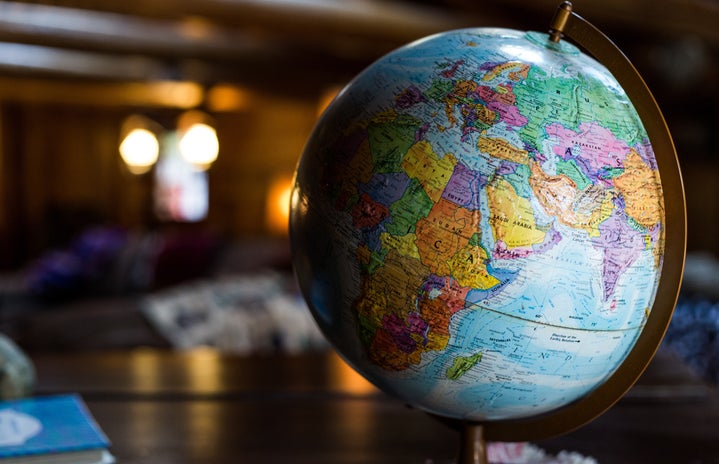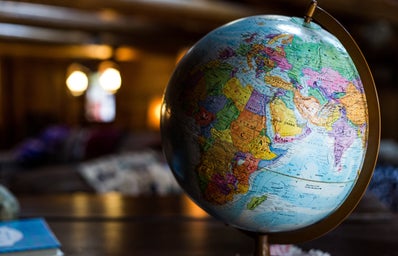The conflict between Armenia and Azerbaijan, revolving around a small mountainous region in South Caucasus, is a very complex dispute. Formally part of Azerbaijan, Nagorno-Karabakh is a de facto independent political entity, backed by Armenia. Recently, after years of relative calm, heavy fighting has resumed. Optimism of recent years for peaceful resolution has faded.
Background
The name ‘Nagorno-Karabakh’ consists of three words from three different languages: Russian word nagorno (нагорный) means ‘mountainous’, Turkish kara ‘black’ and Persian bagh ‘garden’. In addition, Armenians have their own ancient indigenous name for the region, Artsakh. The multilingual name for the territory aptly demonstrates how it is part of historical tradition for more than one nation. Unfortunately, both the Armenians and Azerbaijanis claim, that Nagorno-Karabakh an indivisible part of their country.
The history of Nagorno-Karabakh has its roots in time immemorial and is well beyond the scope of this text. Briefly explained, during the last 200 years the region has been part of Iranian, Russian and, most recently, Soviet empire. Its population has consisted of Christian Armenians and Muslim Kurds and Azerbaijanis. By the late 1990’s, after years of ethnic conflict and warfare, the Muslim population has all but left the region, signing an end to hundreds of years of peaceful co-existence between Christians and Muslims.
Ethnic violence emerged in the late 1980’s, when Soviet central government’s grip began to loosen. Concurrently with the dissolution of the Union, Armenian local government of Nagorno-Karabakh declared independence. This move triggered a full-scale war with the newly independent Armenia and Azerbaijan, both of which tried desperately to secure control of the region. The following war saw Armenian forces make large gains. Consequently, they occupied not only Nagorno-Karabakh but also Azerbaijani areas around it. A fragile truce brokered by Russia in 1994 ended the war and cemented the extent of Armenian occupied zone. Throughout the years weekly skirmishes have been the norm, but no decisive military victory has been secured by either side.
Feeble attempts at peaceful resolution have been thwarted, as neither side is willing to make concessions. Azerbaijan demands its territorial integrity to be respected while the Armenian side appeals to the notion of every nation’s right to self-determination. The status quo suits the Armenians, who control almost all of their claims. Time, on the other hand, is on the Azerbaijani side: the country, enriched by oil and gas revenues, has invested enormous and ever-increasing sums into its military, many times more than relatively poor Armenia.
Recent developments
After Armenia’s revolution of 2018, where authoritarian regime was overthrown and replaced with a democratic one, there seemed to be hope for reconciliation between the warring states. The new Armenian prime minister, Nikol Pashinyan, had a chance to abandon the jingoistic rhetoric of his predecessors and negotiate for a compromise. He proved unable or unwilling to do so and instead adopted an uncompromising stance. As a result, the relations between Armenia and Azerbaijan have been more hostile than usual.
As negotiations began to seem futile, the authoritarian leader of Azerbaijan, President Ilham Aliyev decided to put his modernised army to a test, starting a large offensive on the 27th of September. So far it seems that the Azerbaijani forces have made some headway into Karabakh territory. The fighting has somewhat abated after a ceasefire was intermediated by Russia on the 10th of October. I suspect, however, that the offensive won’t truly end until the Azerbaijani advance is halted. Every small piece of land is precious to Aliyev, whose popular support largely rests on victory on the battlefield.
Other actors
To make the situation more complicated, there are other players involved. Azerbaijan is supported by Turkey, who is an old ally and ethnolinguistically close people for the Azerbaijani (hence the common expression “One nation, two states.”[1]). Armenia, on the other hand, shares a historical bond with Russia, who is also a close economic partner a military ally. Yet the new Armenian regime has not gained the trust of Russia, who has so far stayed neutral instead of siding with her ally. (Democratically elected governments always seem questionable for an authoritarian leader such as Putin.)
Russia has profited from the conflict by selling weapons to both Armenia and Azerbaijan. However, Russia’s interests run far deeper than trade. Although not an active party in the conflict, Russia exerts considerable influence in both the belligerent states, especially in Armenia, who is completely dependent on Russian energy. Posing as a peace meditator awards Russia international prestige but solving the conflict once and for all is not in her interests. As long as the conflict continues, Russia can keep the geopolitical situation in the region favourable. Inciting and sustaining territorial disputes is a tried and tested Russian strategy also in Georgia and Ukraine.
Risks and prospects
I will not try to predict, what might happen in the future, as the previous developments came as a surprise to most. There is still a clear possibility of serious escalation, one that might include outside actors. Should Turkey’s assertive role become too much for Russia to bear, Nagorno-Karabakh might be a prelude to a great power showdown. Also, if Aliyev becomes too bold, or provoked, and invades Armenia proper, Russian intervention will be likely. I have not discussed here the other actors, such as France or the Minsk Group of OSCE, but I find it very unlikely, that they would play any significant role in the coming events.
I believe that a conclusive solution to the conflict requires, along with a truly bona fide Russia, a profound change in the historical consciousness of both Armenian and Azerbaijani population. Neither Pashinyan nor Aliyev can afford to risk losing their popular support, and citizens of both countries seem to be decidedly in favour of war. This is a result of decades of jingoistic rhetoric and adversity between nations, that, in the end, share a long history of co-existence. There is an alternative to a narrative of hate.
Sources: The Brookings Institution, Carnegie, ECFR



